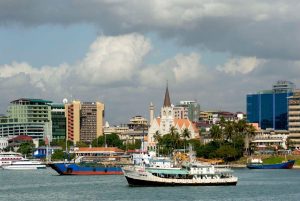The resumption of local and international flights has registered mixed fortunes for airlines. Whereas Kenya Airways says the demand for passenger flights remain low on international front, the domestic numbers have picked up in the recent days.
Due to the encouraging performance of the local flights especially in the coastal route, the national carrier will deploy the large capacity Boeing 737-800 to meet the increased capacity to Mombasa for Friday and Sunday.
At the moment, the carrier is using Embraer 190, which has a capacity of about 120 passengers depending on the configuration.
The domestic travel average load factor in the first week of operation was 56 per cent, which dipped slightly to 49 per cent. This has gradually risen to 59 per cent in the last week. The international load factor is currently at about 37 per cent.
“Demand is picking up on our domestic flights and especially Mombasa. We have good load factors on the flights we are operating, and we will be upgrading flights on Friday and Sunday to operate the Boeing 737-800 which increases our capacity by about 50 per cent more seats,” said Allan Kilavuka, KQ chief executive officer.
Mr Kilavuka said overall demand remains very low globally and the recovery is quite slow.
“We are yet to see resumption of travel for the corporate segment and many of the countries especially in Africa are yet to open up their airspaces or are still maintaining very restrictive travel conditions,” he said.
Weekend fares to South Coast on budget carriers have also gone up since the resumption of flights last month in what signals high demand for passengers seeking to travel to one of favourite tourist destinations as other routes grapple with low numbers
Airlines have been charging between 8,900 and Sh5,900 for a one-way ticket to Ukunda, making it one of the most expensive routes locally.
The carrier had forecasted passenger numbers to remain at half of its capacity for the remainder of the year after the airline resumed international flights to 30 destinations out of its 56 at pre-Covid.
For KQ, they believe that 2020 for them is like a lost year because of anticipated low demand, which at some point is as low as 25 per cent.
He said the airline will continue operating at a reduced scale with an extremely lean network, and this will continue for the foreseeable future.
As such, the carrier has been downsizing it work force in order to maintain a lean team following the reduction of routes where it currently flies.
The CEO said “staff rationalization”, which has been going on for some time, is a consequence of the overall relook at the business in response to how the Covid-19 pandemic has impacted on KQ. He said the exercise is being carried out across the organization so that “a long-term sustainability” of the company and downsizing gives the carrier an opportunity to reset the cost base based on the level of projected demand.
and then strategize for gradual growth in the long-term.
The carrier said the target is to reduce the company’s overall total fixed costs and not just the personnel, by about 50 per cent, which is in response to the airline revenue projections. As such, the firm has already reduced its network and it will also be cutting on some of its assets.
International Air Transport Association (IATA) said in a recently updated global passenger forecast that the airlines will take at least four years to recover from the effects of Covid-19 as they resume operations.
“Global passenger traffic will not return to pre-COVID-19 levels until 2024, a year later than previously projected,” said IATA.
Low passenger numbers is set to hurt the carrier’s earnings in the current financial year. The airline reported a Sh12.9 billion loss for the financial year ended December 2019 up from Sh7.7 billion in 2018 with losses attributed to increased cost of operations.



